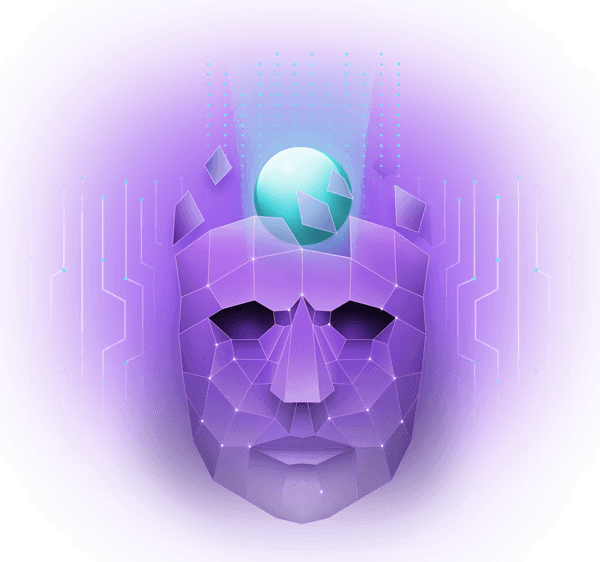OCR stands for Optical Character Recognition. It is a technology that is used to convert different types of documents, such as scanned paper documents, PDF files, or images, into editable and searchable data. OCR technology analyzes the text in the documents and translates it into machine-readable text characters. This allows users to extract and work with the text electronically, making it easier to edit, search, and process large amounts of textual data. OCR has various applications, including document digitization, data entry, text extraction from images, and automated text recognition in industries such as finance, healthcare, and logistics.
If OCR was one of the first forms of artificial intelligence ?
OCR technology itself is not typically considered one of the first forms of artificial intelligence (AI). While it involves machine processing of visual information, OCR is primarily focused on the recognition and conversion of text rather than the complex decision-making or problem-solving capabilities associated with AI.
The field of OCR has its roots in the mid-20th century, and early OCR systems were based on pattern recognition techniques. These systems aimed to recognize and convert printed characters into machine-readable text. Over time, OCR technology has advanced significantly, incorporating machine learning and computer vision techniques.
Artificial intelligence as a broader field encompasses a range of technologies and approaches that aim to mimic human intelligence, including areas such as natural language processing, computer vision, machine learning, and more. OCR can be considered as a component within the broader landscape of AI technologies, but it is not typically regarded as one of the first forms of AI itself.
Why we need OCR?
OCR technology serves several important purposes and offers various benefits. Here are some reasons why OCR is valuable:
Digitization and Preservation: OCR allows for the conversion of physical documents, such as books, papers, and historical records, into digital formats. This enables efficient storage, retrieval, and preservation of information, reducing the need for physical storage space and helping to prevent deterioration or loss of valuable documents.
Text Search and Indexing: By converting scanned or image-based documents into searchable text, OCR enables quick and accurate searching of large volumes of textual data. This is particularly useful for document management, archival systems, and information retrieval applications.
Data Extraction and Analysis: OCR technology facilitates the extraction of relevant data from documents, such as invoices, forms, or receipts, and converts it into machine-readable formats. This enables automated data entry, reducing manual effort and improving data accuracy. Extracted data can also be further processed and analyzed, enabling insights, reporting, and integration with other systems.
Accessibility and Inclusion: OCR plays a crucial role in making printed materials accessible to individuals with visual impairments or reading difficulties. By converting printed text into digital formats, OCR enables the use of screen readers, text-to-speech software, and other assistive technologies.
Efficiency and Productivity: OCR streamlines document processing workflows by automating the conversion of printed text into editable electronic formats. This saves time, reduces manual errors, and improves overall operational efficiency.
Overall, OCR technology enhances information management, facilitates data-driven processes, improves accessibility, and boosts productivity across various industries and sectors.
Intelligence Document Processing
What is OCR?
What is OCR?
OCR stands for Optical Character Recognition. It is a technology that is used to convert different types of documents, such as scanned paper documents, PDF files, or images, into editable and searchable data. OCR technology analyzes the text in the documents and translates it into machine-readable text characters. This allows users to extract and work with the text electronically, making it easier to edit, search, and process large amounts of textual data. OCR has various applications, including document digitization, data entry, text extraction from images, and automated text recognition in industries such as finance, healthcare, and logistics.
What is OCR?
If OCR was one of the first forms of artificial intelligence ?
Features
What amazing content will you create with AI
R&D
Lorem ipsum dolor sit amet, consectetur adipiscing elit. Donec sed finibus nisi, sed dictum eros. Quisque aliquet velit sit
Machine Learning
Etiam tincidunt ligula ut hendrerit semper. Quisque luctus lectus non turpis bibendum posuere. Morbi torto
Chatbot
Quis blandit erat. Donec laoreet libero non metus volutpat consequat in vel metus. Sed non augue id felis pellentesque. Curabitur non bibendum ligula.
Facial Recognition
Semper leo et sapien lobortis facilisis aliquam feugiat ut diam non tempus et malesuada. Luctus lectus non quisque turpis bibendum posuere.
Research & background, summary
10m
daily users
Ac feugiat ante. Donec ultricies lobortis eros, nec auctor nisl semper ultricies. Aliquam sodales nulla dolor. Curabitur non bibendum ligula.


Unlock your creative potential
In non pulvinar purus curabitur nisi odio vel. Cras ultricies ligula sed magna dictum porta. Curabitur aliquet quam id dui posuere blandit. Lorem ipsum dolor sit amet, consectetur adipiscing elit. Donec rutrum congue leo eget malesuada. Curabitur non nulla sit amet nisl tempus convallis quis ac lectus. Vivamus magna justo, lacinia eget consectetur sed, convallis at tellus.
Check out how people are using Divi AI
OCR stands for Optical Character Recognition. It is a technology that is used to convert different types of documents, such as scanned paper documents, PDF files, or images, into editable and searchable data. OCR technology analyzes the text in the documents and translates it into machine-readable text characters. This allows users to extract and work with the text electronically, making it easier to edit, search, and process large amounts of textual data. OCR has various applications, including document digitization, data entry, text extraction from images, and automated text recognition in industries such as finance, healthcare, and logistics.
if OCR was one of the first forms of artificial intelligence ?
OCR technology itself is not typically considered one of the first forms of artificial intelligence (AI). While it involves machine processing of visual information, OCR is primarily focused on the recognition and conversion of text rather than the complex decision-making or problem-solving capabilities associated with AI.
The field of OCR has its roots in the mid-20th century, and early OCR systems were based on pattern recognition techniques. These systems aimed to recognize and convert printed characters into machine-readable text. Over time, OCR technology has advanced significantly, incorporating machine learning and computer vision techniques.
Artificial intelligence as a broader field encompasses a range of technologies and approaches that aim to mimic human intelligence, including areas such as natural language processing, computer vision, machine learning, and more. OCR can be considered as a component within the broader landscape of AI technologies, but it is not typically regarded as one of the first forms of AI itself.
Why we need OCR?
OCR technology serves several important purposes and offers various benefits. Here are some reasons why OCR is valuable:
Your content goes here. Edit or remove this text inline or in the module Content settings. You can also style every aspect of this content in the module Design settings and even apply custom CSS to this text in the module Advanced settings.
„In non pulvinar purus. Curabitur nisi odio, blandit et elit at, suscipit pharetra efficitur elit.”
Create Better
” Quisque aliquet velit sit amet sem interdum faucibus. In feugiat aliquet mollis etiam tincidunt ligula.”
Cable Room
” Quisque aliquet velit sit amet sem interdum faucibus. In feugiat aliquet mollis etiam tincidunt ligula.”
Cable Room
„Fermentum nulla non justo aliquet, quis vehicula quam consequat duis ut hendrerit. In non pulvinar purus curabitur nisi odio vel.”
Booking Tunes
„Semper leo et sapien lobortis facilisis aliquam feugiat ut diam non tempus et malesuada.”
Move Flow
„Fermentum nulla non justo aliquet, quis vehicula quam consequat duis ut hendrerit. In non pulvinar purus curabitur nisi odio vel.”
Booking Tunes
Ready to use Divi AI?
Cras ultricies ligula sed magna dictum porta. Proin eget tortor risus. Lorem ipsum dolor sit amet, consectetur adipiscing elit. Vestibulum ac diam sit amet quam vehicula elementum sed sit amet dui. Donec rutrum congue leo eget malesuada.
